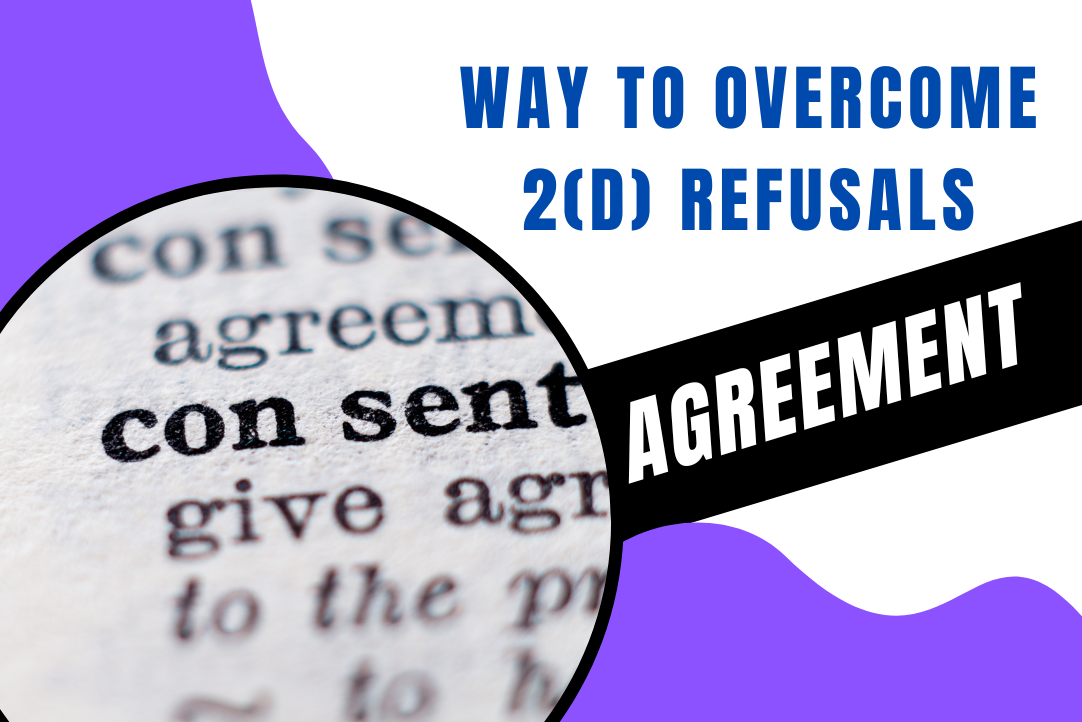CONSENT AGREEMENTS – WAY TO OVERCOME 2(d) REFUSALS

Author – Tanya Janghel
Co-Author – Megha Thakkar
Introduction
One of the benefits of trademark ownership is the right to restrict others from using trademarks that are confusing to customers due to visual similarity. On the other hand, if you want to register a trademark, you must make sure it is distinct enough from other registered trademarks to avoid confusion. Due to the day-by-day establishment of a vast number of new businesses each year, it is not uncommon for two or more organizations to use remarkably identical marks without being aware of each other.
Typically, this happens when businesses are located in different regions or offer completely unrelated services. Majorly businesses and companies avoid conflict and litigation and they want their trademark to be registered as soon as possible so in that scenario the applicant may take into consideration the consent agreement.
What is 2(d) refusal?
As per Section 2(d) of the Lanham Act, a trademark application will effectively be rejected if another trademark registration is already filed for similar or identical products and/or services and is confusingly similar to the applicant’s trademark.
A Consent Agreement may be signed and presented to overturn a rejection if an applicant is denied registration under Section 2(d) of the Trademark Act due to the possibility of confusion.
What is a Consent agreement?
Consent agreement has been dealt with under Section 1207.01(d)(viii) of the trademark Manual of Examining Procedure. A consent agreement is a contract between the two parties, the Trademark applicant and trademark registrant. In the trademark consent agreement, the owner of a trademark approves an applicant to register/use a mark that is identical to their trademark on the belief that there is an unlikelihood of confusion. The consent agreement is the written consent of each party to use a similar/identical mark and coexist while making sure it doesn’t create confusion in the minds of the consumer.
A consent agreement must, however, satisfy additional requirements to be accepted by the USPTO; it cannot just be a “naked consent agreement” which only stipulates that both parties agree to the use and registration of the relevant marks. The USPTO examining attorney may deem a submitted agreement as a “naked consent agreement” when the owner of the trademark gives consent to the applicant for using the identical mark without ensuring and stating how these marks are not identical and what are the steps that will be followed by the parties to reduce the chances of confusion in consumer. When the consent agreement does not cover the details regarding how these marks are not identical, and what are precautions taken by the parties to avoid confusion for the customer then it should be considered a naked agreement.
Prerequisite of a Consent agreement
-The consent agreement should be sufficiently clear, including the explicit steps that the parties involved will take to further minimize consumer confusion
-specific justifications and supporting documentation.
-A signed copy of the agreement should be retained by each party.
-There is no need to submit the contract at any local or state records office. However, if the parties want to proceed with submitting a trademark application using the contested agreement, then a copy must be submitted to the USPTO.
In the case of re Bay State Brewing Co., 117 USPQ2d 1958, 1963 (TTAB 2016) TTAB stated that “there is no per se rule that consent, whatever its terms, will always tip the balance to finding no likelihood of confusion, and it, therefore, follows that the content of each agreement must be examined.” In the end, even the most thorough consent agreement might be defeated by a high risk of consumer confusion brought on by strikingly identical brands.
To reduce the chance of naked consent, it would be advisable for the parties to mention the proper details in the consent agreement that how the marks are not identical, and how this mark will not create confusion in the mind of the consumer so the USPTO examining authority does not declare the consent as naked agreement.
Conclusion
A consent agreement can be a fantastic tool for helping the client to overcome 2(d) refusal and obtain trademark protection. The consent agreement could speed up the trademark application procedure and provide a better idea of the application’s prospects of being approved.
The applicant of the trademark has to seek consent from the owner of the trademark before the application of the trademark if you believe the examiner will reject the client’s application due to a probability of confusion with a registered mark. Sometimes the task of approaching the owner of the registered mark might be difficult or the trademark registrant could demand money.
Approaching a registrant could even lead to more complications like trademark opposition in near future. Hence, approaching an IP expert is very crucial to deal with trademark prosecutions and we at Lex Protector have the technical and legal competence along with the mindset to understand a client’s query deeply and come up with a solution that suits each client’s need.

